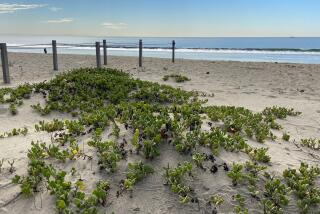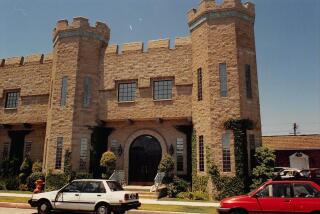How to build a perfect sandcastle: Add 1% water
Ever wondered how they build those dramatic sandcastles on the beach? The trick, researchers say, is getting the perfect amount of water: Only 1%. Less than that, and the sand will crumble under its own weight. More and it washes away.
Physicist Daniel Bonn of the University of Amsterdam and his colleagues examined the scientific literature and found only one paper examining the physics of building sandcastles. That paper claimed that the stability of the structures is due to capillary rise of water through the sand and projects that the maximum height of a castle should be only 20 centimeters (8 inches) -- an absurd conclusion to anyone who has ever visited the beach.
Bonn and his colleagues performed a series of experiments in the lab using sands with varying amounts of water. They cut cylindrical tubes in half and filled them to different heights with wet sand before carefully removing the pipes. Eventually, they reported in the journal Nature Scientific Reports, they developed an equation that predicted the maximum height possible, which turns out to vary with the 2/3 power of the base radius of the column. They also concluded that the ideal water content was 1%. The water, they found, forms capillary bridges between the sand grains that hold them together. These capillary bridges can be quite strong, allowing construction of complex castles.
The current Guinness world record height for a sand castle, set by Ed Jarrett in 2011, is about 36 feet, using a base of about 33 feet. Using Bonn’s calculations, a base that size should be able to support a structure three times that height.
Interestingly, larger structures could conceivably be built underwater. Of course, conventional sand will not work, but it is possible to buy hydrophobic sand that, when immersed in water, forms capillary bridges of air. These bridges are as strong as those formed by water, Bonn said, but underwater, the sand is only one-third as heavy, allowing construction of larger, more complex castles.
LATimesScience@gmail.com
Twitter/@LATMaugh





